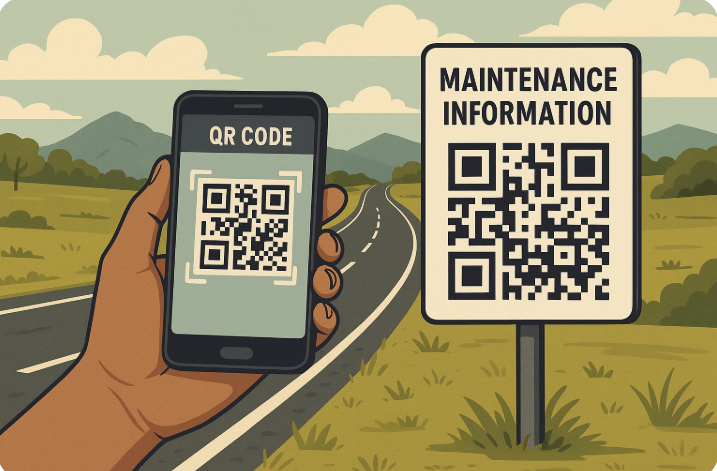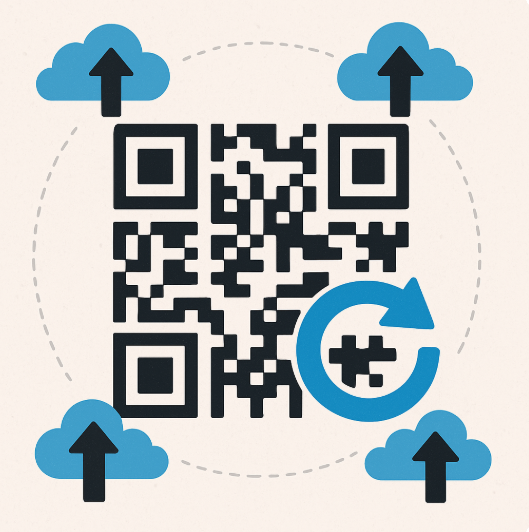Scanned and Stranded: QR Codes in Shifting Lands
GLOBAL GOVERNANCE
6/21/20254 min read


PIC COURTESY: CHATGPT


PIC COURTESY: ChatGPT
Bureau of Society and Transformation
QR codes are, by design, static identifiers in a dynamic world. They are revolutionary in their simplicity—portable, low-cost, data-rich gateways that have transformed everything from public health tracking to mobile payments. In India, their integration into national infrastructure—like under the PM Gram Sadak Yojana (PMGSY)—is an ambitious attempt to make governance interactive and accountable. But the question looms: how resilient are QR codes when geopolitics redraws borders or when the digital layer they connect to becomes contested?
The QR Code as a Technocratic Fix
India’s Ministry of Rural Development recently mandated QR codes on all maintenance boards of roads built under PMGSY. The initiative is aimed at empowering citizens to directly flag poor road maintenance by scanning a code with their phone, submitting feedback and geo-tagged photos, which are then fed into an AI-driven system for inspection validation. It’s a digital leap for a country that’s still patching potholes with outdated methods.
This use case highlights the QR code’s strength: decentralization. A user with a phone can become a node in a quality assurance network. There’s no app download, no login—just scan and act. It’s civic engagement without bureaucratic delay. Yet for all its digital elegance, this model assumes a stable sociopolitical substrate.
When Borders Shift, Data Roots Get Exposed
QR codes are hardwired to a backend: a server, a database, a maintenance dashboard, often tied to jurisdictional definitions like district, state, or administrative block. In regions with stable governance, this works seamlessly. But what happens when boundaries are disputed or change?
Consider LWE (Left Wing Extremism)-affected areas, many of which fall under PMGSY’s road-building efforts. These are zones where sovereignty isn’t always clear-cut on the ground. A QR code placed today in a village administered by one state could be rendered meaningless tomorrow if control shifts due to insurgency, redistricting, or conflict. The infrastructure the code points to—say, Bihar’s PWD or Odisha’s local monitoring system—may no longer apply. The QR becomes a fossil, pointing to a past political reality.
We saw an analog version of this during the post-reorganization phase in Jammu & Kashmir after Article 370 was revoked in 2019. Legacy data systems, property registries, even basic identifiers like pin codes had to be restructured. A QR code in such a flux would either break or mislead. Unlike maps, which are redrawn, or postal systems, which adapt, QR codes are brittle once printed and deployed.
The Illusion of Permanence in a Fragile Federation
A key assumption behind QR-coded governance is that the central state’s authority is continuous and universal. India’s layered federalism complicates this. Road maintenance may be monitored by the Centre, but it’s implemented by states. Each QR code under PMGSY is rooted not just in physical asphalt but in political contracts—funding ratios (60:40 for most states, 90:10 for northeastern states), maintenance terms, contractor obligations—all of which can be disrupted by state elections, local unrest, or policy shifts.
The illusion of permanence is most vulnerable in border regions. Take the India-Nepal border, which has seen cartographic disputes in Kalapani and Lipulekh. If roads are built in such contested zones and linked to Indian QR systems, they embed a claim—a subtle digital staking of territory. In the event of international disagreement, even something as benign as a QR code could be seen as provocation.
Who We Are:
The Economic Nations champions global unity through economic collaboration, focusing on sustainable growth, reducing inequalities, and enhancing global relationships for mutual prosperity and peace.
______________________________________
Surveillance or Empowerment: A Shifting Balance
Another geopolitical dimension is data sovereignty. The QR codes being deployed today in India under PMGSY funnel data into centralized systems like e-MARG, integrated with AI/ML frameworks for automated performance evaluation. This is good governance—until the algorithm becomes opaque or politicized.
Imagine a scenario where citizen-uploaded photos show chronic neglect in a politically sensitive district. Will that data be flagged, suppressed, or weaponized? When digital systems interlock with geopolitics, they risk becoming tools of surveillance or exclusion rather than empowerment. The very strength of QR codes—their traceability—becomes a vulnerability in politically volatile zones.
Lessons from the Global South
Countries in Africa and Latin America have experimented with QR code-based citizen feedback systems in public health and utilities. In Nigeria, QR codes were used in 2021 for tracking vaccine delivery in conflict zones. But reports emerged of counterfeit codes being used to fake data compliance. In Brazil, QR codes linked to deforestation permits were manipulated to launder illegal logging. The underlying lesson: QR codes inherit the strength—or weakness—of the systems they point to.
India is not immune. With over 7.8 lakh km of rural roads already built under PMGSY and Rs 70,125 crore allocated for 62,500 km more by 2029, the stakes are high. QR codes here are not just links—they’re assertions of control, performance, and accountability. But their meaning can dissolve instantly when the social or political landscape fractures.
The Future: Self-Healing Codes and Decentralized Backends?
To address these risks, India could explore dynamic QR codes with self-updating capabilities. Blockchain-based logging could offer a tamper-proof record even in jurisdictionally unstable areas. Edge-computing models—where feedback is locally processed before syncing with the cloud—might offer resilience in conflict zones or connectivity deserts.
But the bigger leap needed is conceptual: understanding that no digital layer can be future-proof unless the political architecture it rides on is itself stable, inclusive, and adaptive. QR codes can carry data. They cannot carry legitimacy.
Conclusion
QR codes are powerful in their minimalism. They flatten the gap between citizen and state, allowing a villager in Bastar or a commuter in Baramulla to report a broken road with a single scan. But as India’s borders—literal and administrative—continue to evolve, the resilience of these systems will be tested not by technology but by geopolitics.
The challenge, then, is not just about embedding QR codes into infrastructure. It’s about embedding trust into the systems they represent. Because when sovereignty is up for debate, so is every square inch of road—and every black-and-white square that sits beside it.
Contacts
enquiry@economicnations.org
(xx) 98-11-937-xxx (On verification)
